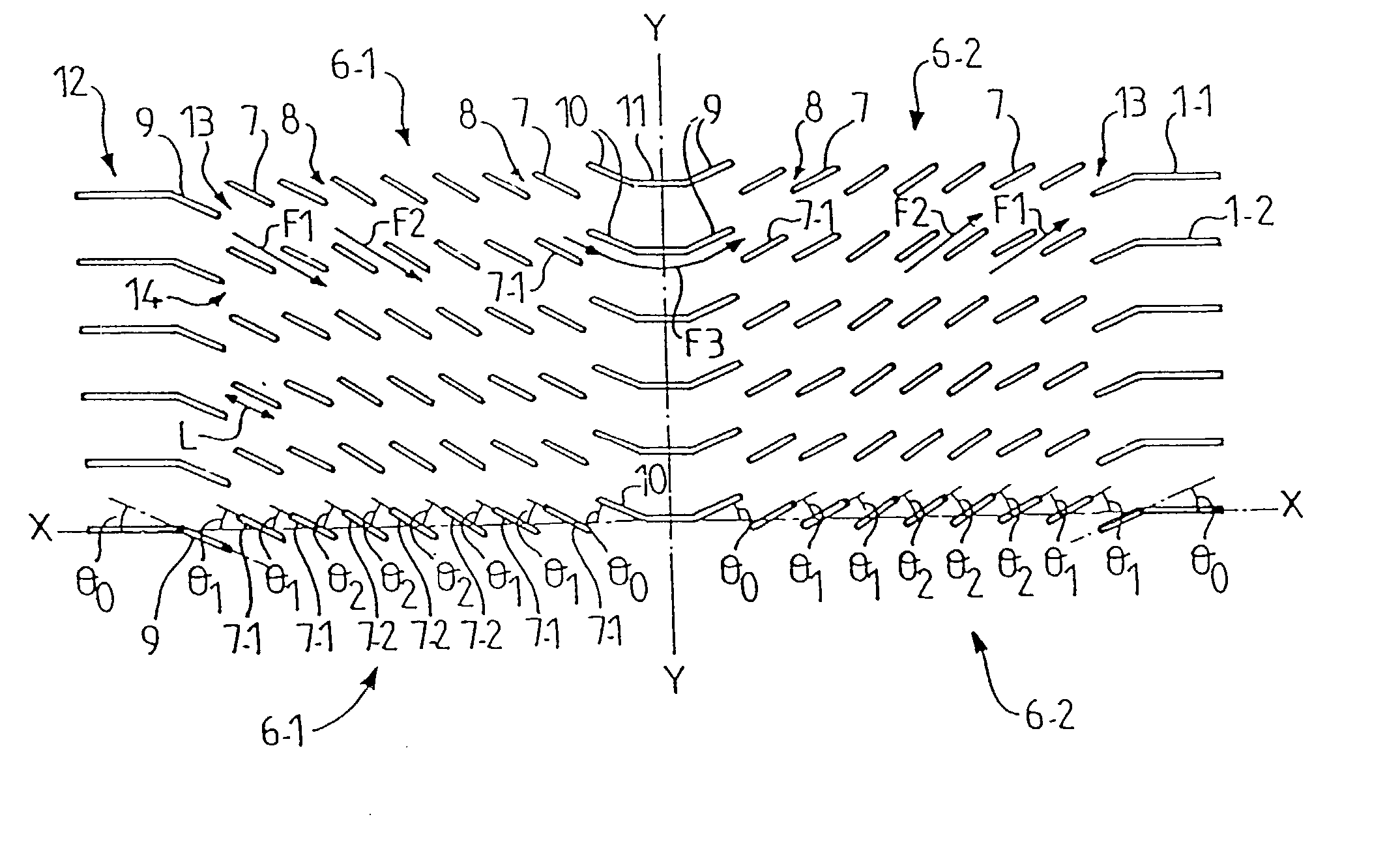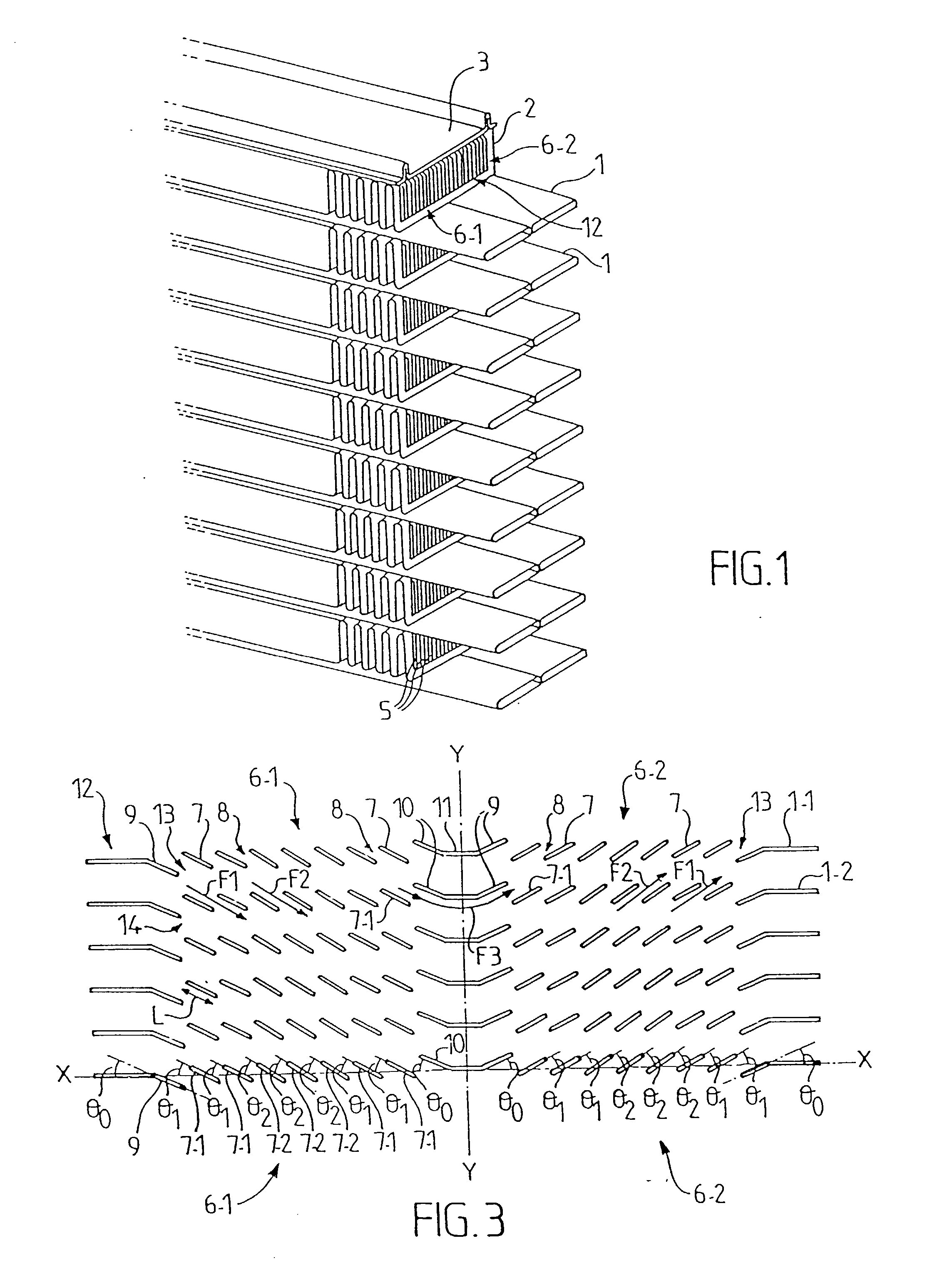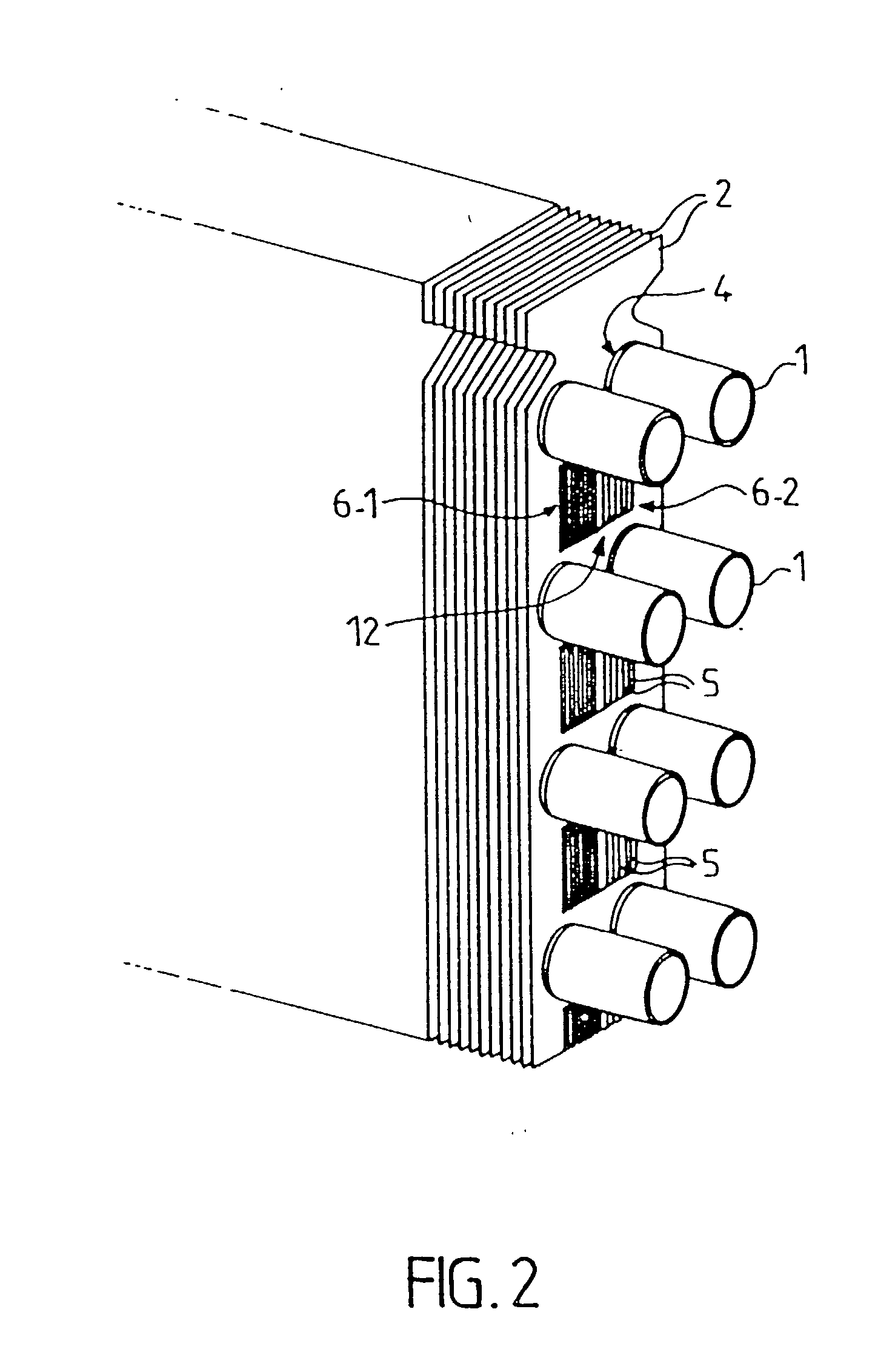Metallic cooling fin for a heat exchanger, especially for a motor vehicle
a technology of cooling fins and heat exchangers, which is applied in the direction of indirect heat exchangers, lighting and heating apparatus, transportation and packaging, etc., can solve the problems of increasing energy losses, reducing the output of heat exchangers, and causing greater energy losses, so as to reduce or eliminate drawbacks
- Summary
- Abstract
- Description
- Claims
- Application Information
AI Technical Summary
Benefits of technology
Problems solved by technology
Method used
Image
Examples
Embodiment Construction
[0028] The main purpose of the heat exchanger is to transfer heat between a first fluid flowing within some of the elements of the heat exchanger, and a second fluid which flows on the outside of the same element. To this end, the heat exchanger generally consists of tubes having ends which are open into hollow headers, with the first fluid flowing in the tubes, this being for example a refrigerant fluid. The second fluid, which is typically air, flows around the outside of the tubes.
[0029] With a view to improving the heat exchange (or heat transfer) performance of the heat exchanger, it is usual to increase the heat exchange surface, which is that of the walls of the tubes, by juxtaposing to the tube walls indirect heat exchange surfaces, here in the form of fins 2. These fins are of metal, and are preferably made of aluminium or an aluminium alloy. They could however also be made in other metals, for example copper.
[0030] As shown in FIGS. 1 and 2, the fins will assume substantia...
PUM
 Login to View More
Login to View More Abstract
Description
Claims
Application Information
 Login to View More
Login to View More - R&D
- Intellectual Property
- Life Sciences
- Materials
- Tech Scout
- Unparalleled Data Quality
- Higher Quality Content
- 60% Fewer Hallucinations
Browse by: Latest US Patents, China's latest patents, Technical Efficacy Thesaurus, Application Domain, Technology Topic, Popular Technical Reports.
© 2025 PatSnap. All rights reserved.Legal|Privacy policy|Modern Slavery Act Transparency Statement|Sitemap|About US| Contact US: help@patsnap.com



